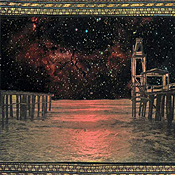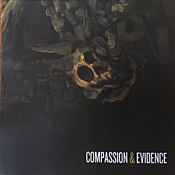Recent Recordings by Area Artists

Tenor saxophonist, bass and B-flat clarinetist, composer, educator, producer, and poet Wendell Harrison has long been a major catalyst in the artistic and socio-political worlds of Detroit. In the seventies of the last century, he created the artist collective Tribe in concert with trombonist Phil Ranelin, joined by Harold McKinney and Marcus Belgrave as well as others with a focus on artistic interaction, Afrocentrism, education, and mentoring as well as self-reliance. They issued LPs such as Harrison’s own An Evening with the Devil, and a magazine that covered politics and social issues as well as the arts. Tribe officially ceased its existence in 1977, but Harrison developed the same ideas and principles further by creating the non-profit Rebirth organization together with his wife, pianist, vocalist, and composer Pamela Wise, eventually adding the record label WenHa. The memory of Tribe persisted, especially in Europe, where its records were highly prized and reissued. Recent concert reunions and further reissues, which we hope to review here in the near future, have rekindled interest in Tribe — and now Harrison has released a new recording, Get Up off Your Knees, (bandcamp.com) that harkens very much to the spirit of that organization, albeit very much up to date and with a brand-new cast.
In keeping with the Tribe aesthetic, the compositions on this recording features an amalgam of African diaspora musical styles while firmly rooted in Detroit modern jazz. The varying cohort of musicians is multigenerational, focusing on some of Harrison’s former students and stalwarts of the Motor City jazz community. The album consists of eleven compositions that illuminate the African diaspora that “emanated from West Africa, such as Guinea-Bissau and Senegal, which are part of the culture fabric of Detroit…reflecting the intellectual ideas on education and expanded consciousness of the indigent communities and the future of the youth in Detroit as well as the world.”
The opening “Turn Around” sets the scene: a funky loping tune featuring the leader’s tenor sax with a heavy dose of funk floating on Djallo Djakate’s backbeat, followed by a fluid guitar solo from Jacob Schwantz, who is well featured throughout. The next track, “Educators,” consists if a spoken poem extolling the education of children, written by Harrison, that exemplifies the social engagement, concern for community building, and self-reliance messages that lie at the root of this project. From concern for the young, it moves to a celebration of a distinguished elder, ceramicist Marie Woo, who in her nineties is still working on her art, that provides the opportunity for a powerful clarinet outing by the leader. Other compositions reflect Afro-beat, Caribbean, and South American styles, such as the samba-like “Sage of a Carrot” that serves to feature a ripping tenor sax solo, while the more straight-ahead “What’s Up” once again demonstrates Harrison’s boppish B-flat clarinet mastery, followed by Swantz on guitar, weaving in and out of the ensemble, ending with Wendell returning and preaching the blues.
After a swaying Senegalese tune “Sirea,” composed and sung by Pathe Jassi, the proceedings get down with “Revolution,” a funky tune that begins with Pamela Wise on electric guitar and Harrison on tenor; a contemporary reworking of Gil Scott Heron’s 1971 anthem “The Revolution will not be Televised” with Mbiu Chui reciting his own new lyrics. This is followed by an instrumental, the samba-like “Sage of a Carrot” that is a vehicle for Harrison to let loose on tenor. The album ends with a pensive clave dominated “Wandering Thoughts” that shows off Harrison’s arranging skills. Scored for a fourteen-member band that includes French horn, bass trombone, flute, oboe, and bassoon, it takes us out with a long tender tenor solo by the leader, followed by similarly pensive one by John Douglas on fluegelhorn, I believe, some more dancing ensemble music, until Alexis Lombre points to the end with a piano outing. A wonderful recital that shows Harrison and his cohorts at their best, staying true to the values and aesthetics of Tribe.

The Northwoods Improvisers have been making music together for over two decades and while the personnel have varied over the years, the founding duo of bassist Mike Johnson and drummer Nick Ashton have remained at the core of the band throughout. For almost a decade they collaborated with Detroit’s Faruk Z. Bey and his closest associates, releasing nine CDs together. The Northwoods regrouped after Bey’s passing and resurfaced a while ago as a quartet with the front line of woodwind players Dominik Bierenga (tenor/alto/soprano saxophones, flute, percussion) and Donovan Boxey (alto/soprano saxophone, clarinet, melodica, wood flutes, percussion), two relatively young musicians who were unknown at the time, but immediately impressed all who heard them and have now relocated to Detroit. Raft (entropy stereo ESR 0121, entropystereo.com/catalog.html), features this new quartet version of the Improvisers, with the addition of percussionist Jordan Pries on two tracks, on nine tunes, five of which were composed by Johnson, including the three-part suite Woodfire dedicated to bassist John Lindberg, the rest by Bierenga and Boxey, finally “19 Moons” by Bey, which was the title song of the first album of his collaboration with the Northwoods. The last two compositions are dedicated to Bey and his long-time partner, woodwind master Mike Carey, fittingly rounding out a recital that begins with “Ethiopia” from a 2006 LP with Bey entitled Infa’a. The association with the great Detroiter is referenced in homage, but it does not dominate the music, which represents a new chapter in the long history of the band.
The music is ecstatic and the album weaves through a variety of tempos and moods, and although they had not been together that long as a quartet before this recording was made, the musicians lock together as if they had been playing in tandem for ages. The rhythm duo of Ashton and Johnson has created a seamless bond over decades and the two horn players have been friends for years, and the general togetherness is well on display here. The compositions provide vehicles for long improvisations by all members, with the multiple horns of the front line providing timbral variety, matched on some tunes by the use of various percussion instruments, melodica, and wooden flutes. These are particularly effective on compositions such as “Woodfire” that feature non-western scales. On the faster hard-driving ones the ensembles are played with great precision and the surging solos are interspaced with composed interludes to provide contrast and variety and to launch the next improvised exploration.
Both saxophone players have mastered a wide range of expressive devices and can move on a dime from deeply inside playing to expressive screams and multiphonics, ensuring that the music never stays static, and when they lock horns the effect is just right. They can play far out, but both thrive on the more delicate tunes. Ashton and Johnson solo as well: this is truly quartet music, not horns backed by bass and drums; moreover, Johnson is a bassist who revels in the deep tones of the instrument and his personal sound very much marks the overall sound of the band. Overall, a wonderful and deeply satisfying addition to the Northwoods Improvisers discography, marking a new chapter in their long history.

Livonia-based violinist and violist Mike Khoury has collaborated with the Northwoods on numerous occasions and is the proprietor of the entropy stereo label, which has released many of their albums, as well as those of Bey, Griot Galaxy, and many others. His own music has appeared on many other labels, most recently Creative Sources out of Lisbon in Portugal. During his travels he collaborates with musicians throughout the country and his new recording documents a recording session the Temescal Art Center in Oakland, CA. Compassion & Evidence (Creative Sources cs632) features the quartet of Gino Robair (electronics), Phillip Greenlief (tenor sax and clarinet), Mike Khoury (viola) and Dominic Cramp (lyra).
The overall textures of the four improvisations registered here pit the acoustic sax/clarinet and viola against the electronics played by Robair and Cramp (the lyra is not the ancient Greek string instrument but apparently a form of analog synthesizer). Sometimes the contrast between the sounds creates its own story, but then they blend to the point where it is impossible to know which instrument is making any particular sound, swinging from individuality to utterly collective cohesion.
Khoury’s use of the viola rather than his more customary violin is particularly apposite here: the deeper sounds of the larger instrument provide an organic human counterpart to the synthesized sounds emanating around them, both bowed and pizzicato (as particularly evident at the beginning of the second track). Greenlief’s judicious use of the myriad kinds of sounds he can elicit from his horns is characteristic of the control that these experienced improvisors bring to the ensemble, as are the seemingly limitless noises that are at everyone’s disposal. It needs stressing that this is definitely ensemble music with voices coming in and going out, rising into prominence, dropping into the background or falling out completely in just the right moments and each piece develops on its own unique trajectory, creating a fully formed improvised composition: blips and bursts or long drones can erupt at any moment leading to melodic interludes that then fold back into the swirling aural blend.
This kind of music creates melody out of texture and sound; here we find drama and surprise, tensions and release, progressing in an often patient manner without the predictability that can undo some efforts, drawing the listener into a sonic world all its own.

Saxophonist and clarinetist Peter Formanek is active on the creative jazz music scene in the Ann Arbor/Detroit region and now in Kalamazoo. His father Michael Formanek is an internationally celebrated bassist who has played and recorded in the top bands of our time and led his own groups, including a highly acclaimed big band. Once Peter graduated from the University of Michigan, they began to play as a duo, in 2019 took themselves on tour, including a notable gig at Ziggy’s in Ypsilanti, then ended up in a recording studio in Brooklyn, resulting in the album Dyads (outofyourheadrecords).
The sparse instrumentation presents an obvious challenge that the duo has managed to overcome successfully; rather than take on existing material they have each composed material that is geared to this specific project, blending, contrasting, playing in concert or against each other, and fully exploiting the full ranges of their instruments. The opening track, “Two, Not One,” explicitly expresses the goals of the endeavor: a single held saxophone tone is joined by arco bass, the latter then launches into melody over the drone, they switch places, and then move one to exchange voices on the same melody. The bass, now pizzicato, then restates the melody, now in time, and once joined by the sax they chase each other with variations on the tune. It is a tribute to both musicians that they find so many different ways of working together, providing infinite variety over a recital that clocks in at over an hour. Peter switches to clarinet on just over half the tracks, providing further aural variety. And as much as his rich nicely spread tenor saxophone sound works well in this context, for me his clarinet work is particularly impressive, as he exploits its full sonic potential rather than staying within the kind of rich but limited tonal range favored by academic training.
Listening to the sounds of the two artists coming through speakers rather than seeing them playing on a stage, one would never imagine that they belong to different generations; there is a purity to this music making that erases all distinctions of genre, technical limitations, age, or place.
